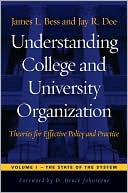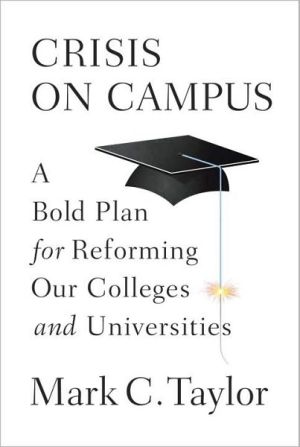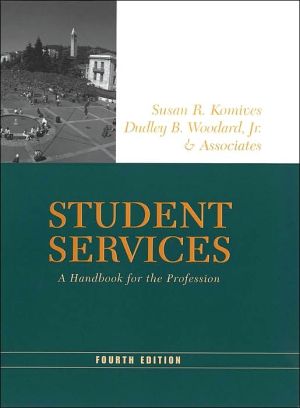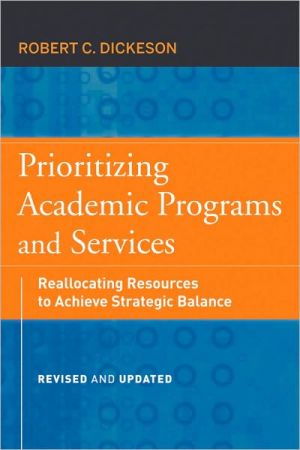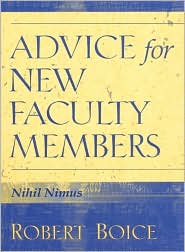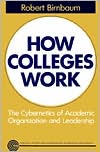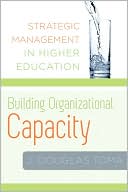Understanding College and University Organization: Theories for Effective Policy and Practice; Volume I: The State of the System
Search in google:
This two-volume work is intended to help readers develop powerful new ways of thinking about organizational principles, and apply them to policy-making and management in colleges and universities.The book is written with two audiences in mind: administrative and faculty leaders in institutions of higher learning, and students (both doctoral and Master's degree) studying to become upper-level administrators, leaders, and policy makers in higher education.It systematically presents a range of theories that can be applied to many of the difficult management situations that college and university leaders encounter. It provides them with the theoretical background to evaluate knowledgeably the many new ideas that emerge in the current literature, and in workshops and conferences. The purpose is to help leaders develop their own effective management style and approaches, and feel confident that their actions are informed by appropriate theory and knowledge of the latest research in the field.Without theory, organizational leaders are forced to treat each problem that they encounter as unique – as if it were a first-time occurrence. While leaders may have some experience with a particular issue, their solutions are usually not informed by the accumulated wisdom of others who have already encountered and resolved similar situations. The authors approach the theory of the organization and administration of colleges and universities from three quite different perspectives, or paradigms, each relying on different assumptions about the “reality” of organizational life in colleges and universities. The positivist paradigm–primarily an omnibus systems theory–integrates the chapters into a comprehensive, yet easily accessible whole. Social constructionism, the second paradigm, is introduced in each chapter to illuminate the difficulty of seeking and finding meaningful consensus on problems and policies, while also addressing important ethical issues that tend to be overlooked in leadership thought and action. The third paradigm, postmodernism, draws attention to difficulties of logic and communication under the constraints of strictly linear thinking that “authorities” at all levels attempt to impose on organizations.This “multiple paradigm” approach enables readers to become more cognizant of their own assumptions, how they may differ from those of others in their organization, and how those differences may both create difficulties in resolving problems and expand the range of alternatives considered in organizational decision making. The book offers readers the tools to balance the real-world needs to succeed in today’s challenging and competitive environment with the social and ethical aspirations of all its stakeholders and society at large. The authors’ aim is to elucidate how administration can be made more efficient and effective through rational decision-making while also respecting humanistic values. This approach highlights a range of phenomena that require attention if the institution is ultimately to be considered successful.
Each chapter begins with a preview of its key points and includes a case drawn from recent situations experienced by practitioners. The cases provide concrete experiential “data” against which the theories in each chapter can be tested, validated, and compared with situations that readers encounter at their home institutions. Questions are provided about each case to stimulate reflection on and discussion of the multiple issues raised. Each chapter includes an extensive bibliography on the topic.Volume I: The State of the System Volume One provides alternative ways of theoretically conceiving of the more stable and persisting conditions that exist at virtually all higher education institutions--including organizational and departmental design, structure and roles, the institution’s external environment, its culture, and the influence of individual motivation, group dynamics and interpersonal relations. From the theories presented in this volume, administrators will be able to recognize the elements in their institutional dilemmas that have been found commonly to recur across many institutions; understand the conditions that may have caused the problem to arise; and, by utilizing the theories presented, identify successful remedies that have been employed to address them.A RESOURCE FOR HIGHER EDUCATION LEADERSThe book addresses critical questions for effective leadership of colleges and universities. The chapters provide new insights on questions such as:· How can college and university leaders develop a more thorough understanding of the complex environments in which their institutions operate?· Which elements of organizational structure most strongly contribute to improving institutional performance?· How can college and university leaders enhance motivation and job satisfaction for the individuals and teams that report to them?· How can leaders foster higher levels of innovation through organizational learning?· Which organizational processes are most likely to generate better decision making and more effective strategies for guiding the institution?A unique problem-to-theory index enables readers to identify quickly the theories and concepts that will be most useful in addressing a particular organizational problem. This feature allows the book to serve as a ready reference for higher education leaders as they encounter new challenges and seek fresh ideas for action.In addition, college and university leaders can use the book as a staff development tool. Each chapter begins with a practice-based case, which illustrates important theories and concepts. Teams and work groups can read the cases together, reflect on their own experiences with similar problems, and use the theories in the chapter to craft solutions to organizational challenges. These types of analytical exercises have significant potential to improve the performance of work units or whole organizations.A COMPREHENSIVE TEXTBOOK FOR GRADUATE AND MASTER'S COURSESInstructors of graduate courses in higher education organization and administration will find in this book a comprehensive treatment of the important theories and conceptual frameworks that guide research and practice in this field. Rather than piecing together readings from disconnected sources, instructors can use this book to explore a wide variety of organizational problems encountered by higher education leaders, and examine a full range of organizational theories that can be used to address those challenges.Each chapter begins with an exemplary case and is accompanied by questions about the case that require students to use the theories in the chapter to develop possible solutions to the problems and issues raised in the case. The main content of the chapters is the presentation, explanation, and illustrated application of organizational theories as they pertain to higher education institutions. The chapters conclude with stimulating and provocative questions about the chapter material that can be used to further assess students’ understanding of the theories and to apply their skills to conditions in their home institutions. An extensive bibliography accompanies each chapter, and a research appendix describes how graduate students can apply these theories in their own research in master’s theses or doctoral dissertations.Problem-to-Theory Application Table; Foreword—D. Bruce Johnstone; About the Authors; Acknowledgements; Preface; Introduction; 1) The Application of Organizational Theory to Colleges and Universities; 2) Colleges and Universities as Complex Organizations; 3) approaches to Organizational Analysis: Three Paradigms; 4) General and Social Systems Theory; 5) Organizational Environments; 6) Conceptual Models of Organization Design; 7) Bureaucratic Forms and Their Limitations; 8) Organizational Roles; 9) Motivation in the Higher Education Workplace; 10) Groups, Teams, and Human Relations; 11) Organizational Culture; 12) Conclusions: Understanding the shape of Higher Education; Appendix: Applying Organizational Theory; Subject Index; Author Index.
